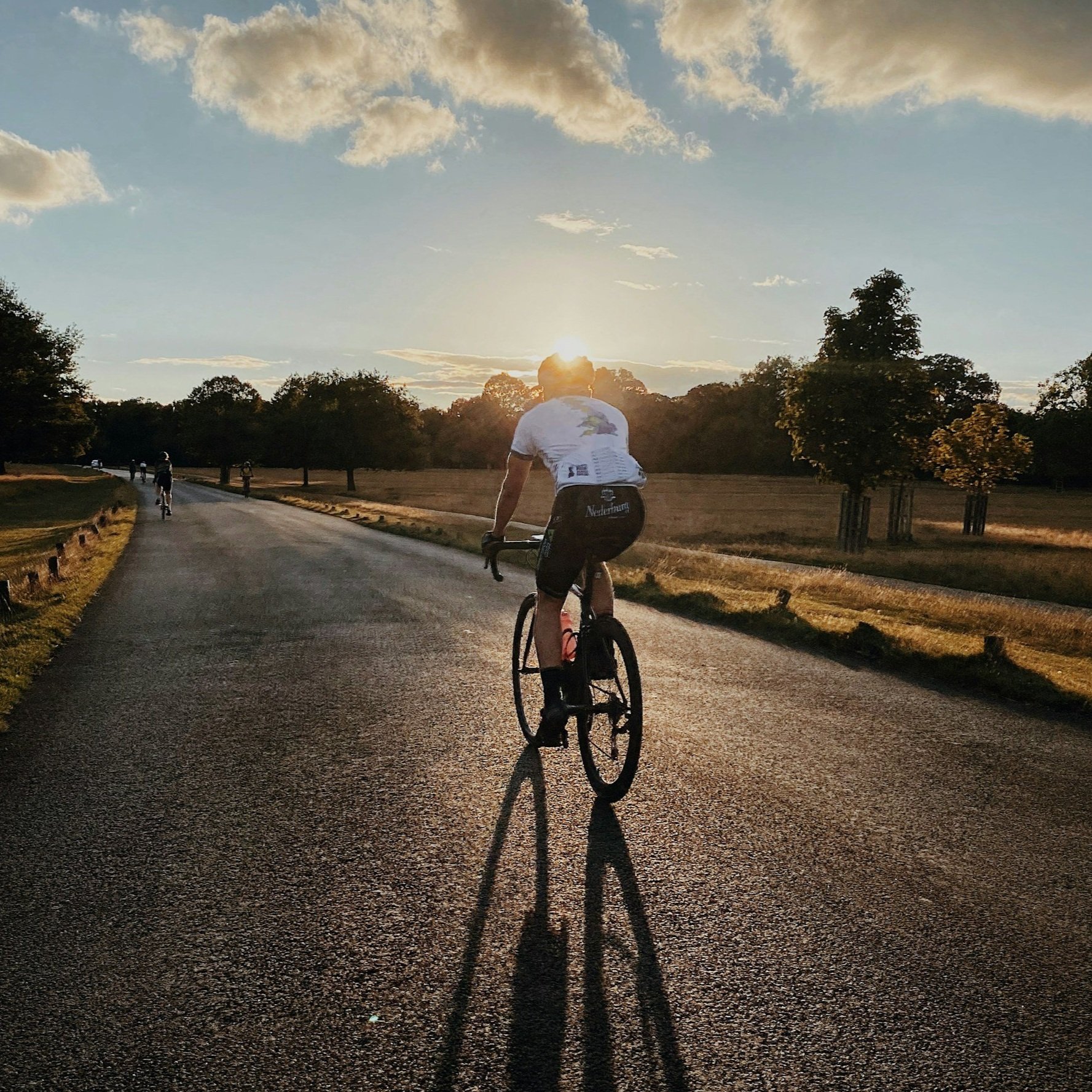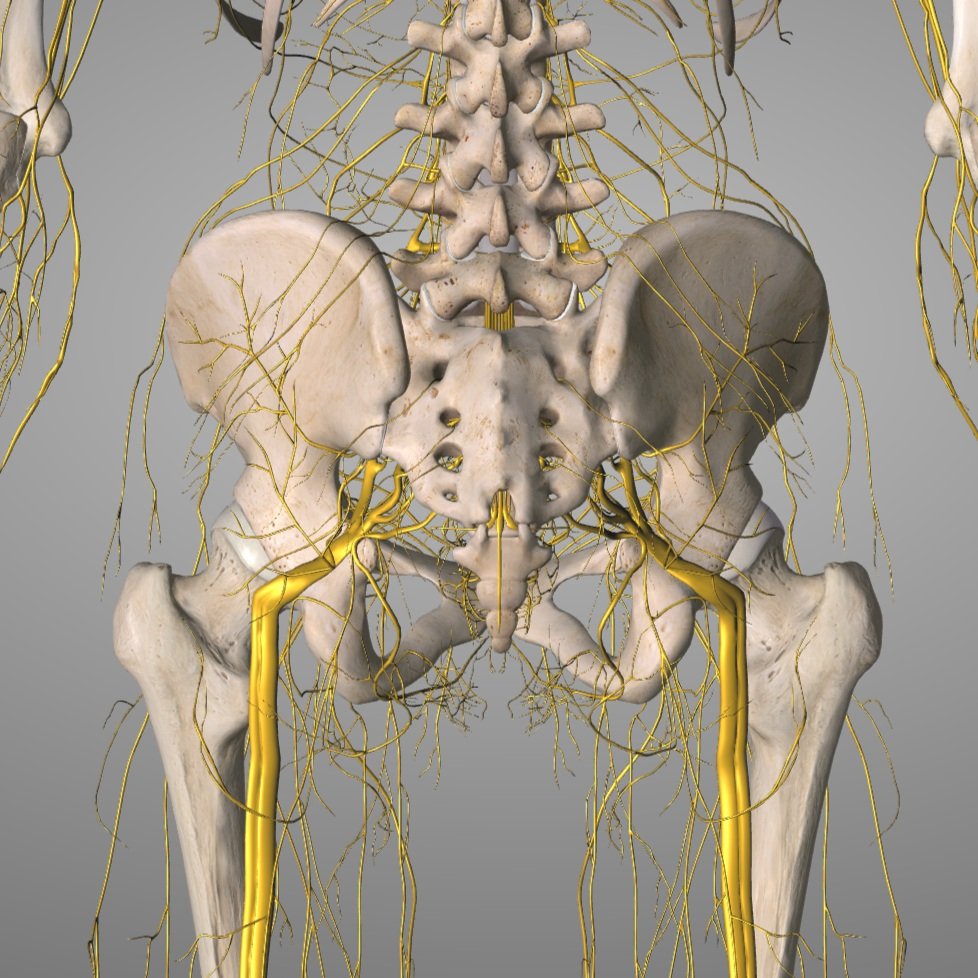Sciatica With Cycling: What You Can Do About It
Sciatica with cycling can be a real pain in the butt. (or leg, back, or calf!). I’ve helped hundreds of people resolve their sciatica so they can enjoy riding again. In this article, I’ll cover:
What sciatica is.
What causes it.
Why it’s so prevalent in cycling.
What you can do to fix it.
What is Sciatica?
Sciatica is a blanket term to describe pain in the low back and down the leg caused by some sort of insult to the sciatic nerve. The sciatic nerve can be compressed at the level of the spine, entrapped by muscle, or put on stretch when we move certain ways. Any of these things can result in radiating pain down the leg. People often describe it as a burning ache that gets sharp when they move a certain way. Some of the most common sites of entrapment are:
1. At the spine where the nerve roots that make up the sciatic nerve exit
2. Underneath the piriformis muscle in the buttocks
3. Between the heads of the hamstring or behind the knee
4. At the fibular head on the outside of the lower leg
5. At the plantar fascia
Nerves like to be left alone. They don’t like to be stretched, compressed, or have too much pressure applied to them. When some sort of outside force is applied to them in a way they don’t like, they play a game of telephone and shoot a pain signal up and down the nerve. That causes the radiating symptoms people experience.
You also don’t have to feel pain all the way up and down your leg for it to be sciatica; oftentimes, the pain may only be located in the buttocks, or the hamstring, or the lower leg.
What Causes Sciatica?
Really generally speaking, we have two kinds of skeletal muscles in our body. We have movers and we have stabilizers. The movers are all of the big muscles that we use a ton in cycling: the hamstrings, glutes, and quads. The stabilizers are the lesser-known and smaller muscles that sit closer to the joints.
We need the stabilizers to fire quickly and strongly whenever we move a limb (i.e., pedal) in order to produce force. Otherwise it’s like trying to shoot a cannonball out of a canoe; it’s difficult to generate any power.
Our body and brain always like the path of least resistance. That means they would rather just use the big mover muscles all day than have to try and modulate the small ones. Since riding requires a significant amount of power, our body tends to keep using the big muscles more and more, until it decides to just default to using them for both moving AND stabilizing.
This results in uneven work between muscle groups in the body, shortening of some muscles, and sciatica with cycling.
Why is Sciatica So Prevalent in Cycling?
Sciatica with cycling is prevalent because of the flexed-hip position we’re in on the bike. In that position, it puts stress through the spine, piriformis, and hamstrings (the first three common entrapment sites listed above). Let’s break that down some more:
1. The spine: Seated on our bike, in order to reach the handle bars we have to flex the spine forward. A flexed spine has to work harder to resist gravity than a spine that’s in an upright position. When we pedal, force is driven through each spinal segment unevenly, and pulls on the spine as we pedal right, left, right, left. This causes extra stress on the nerve roots where they exit.
2. The piriformis: The piriformis is a hip rotator and stabilizer. It sits underneath the glutes. Because the body always likes to use big muscles instead of modulating small ones, the body will start to recruit the glute to both extend and stabilize the hip instead of trying to use the smaller piriformis. Because that means the glute is doing two jobs, it tightens up under all the load that is asked of it. When we sit on the bike, it stretches the glute. If the glute is already tight, it acts as saran wrap over the piriformis, compressing it. This compresses the sciatic nerve that runs under it and causes sciatica with cycling.
3. Between the hamstrings: The hamstrings connect to the very base of the pelvis. In the flexed-hip position of cycling, the proximal (pelvic) connection of the hamstring is lengthened. If the hamstrings are already tight, they will have difficulty lengthening in that position and subsequently compress the sciatic nerve underneath it. (I wrote all about what to do and what not to do about tight hamstrings with cycling here).
What You Can Do to Fix Your Sciatica With Cycling
Stability
The first thing you need to do to fix your sciatica with cycling is to get your small stabilizers back online. I typically have my patients start with the hip stabilizers and the multifidi, the small muscles that help stabilize the spine. There are two exercises I most often give for that:
Side note: I think every cyclist knows about clamshells. But the way I prescribe them makes them very specific to target the hip stabilizers instead of the glutes. Watch the video and try out this new way and see how different that feels than any clamshells you’ve done in the past.
I have found these exercise need to be performed daily for at least 2-3 weeks in order to re-teach the brain and the body how to use these muscles.
Spinal Mobility
You then have to work on spinal mobility. Most often, us cyclists are really good at flexing through the midback, but really bad at flexing through the lower lumbar spine and hips themselves. I use this drill to help teach the spine how to flex from the bottom up, instead of just slouching through the midback on the bike.
Load and Lengthen Glutes
Lastly, you need to load the glutes in a lengthened position. I typically use this drill adapted from the well-known physio David O’Sullivan to teach the body how to load the glutes, hamstrings, quad, and lower leg appropriately.
Without evaluating you personally, I can’t say for certain the above is where your sciatica symptoms are coming from. However, I’ve treated hundreds of people with sciatica symptoms while cycling or doing other sports they love and have found the above to be useful in most of them. So check them out!
My next steps for you:
1. Be sure to check out my blog post about tight hamstrings, as those who experience sciatica with cycling oftentimes also report tight hamstrings.
2. Download my Essential Bike Fit Checklist to confidently fit your bike and feel better on your next ride! 👇 👇 👇
Join my newsletter fam!
Sign up to get more info about PT, performance, and physical therapy directly into your inbox. When you subscribe, you also gain first dibs on all new courses and offerings!






